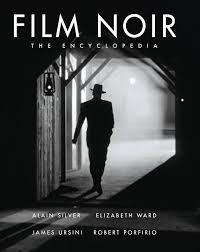The Allure of Indian Noir
The cinematography of Indian noir is an intriguing mix of shady art, weaning stories and cultural vibrancy. The Indian film makers, inspired by the classic film noir, have adopted the genre and taken it in a direction that reflects the particular social and cultural reality of India. This article explores the history, strategies, and highlights of Indian noir cinematography, providing readers with an overview of a sensibility and aesthetic that continues to captivate audiences worldwide.
The Genesis of Indian Noir
Early Influences and Adaptations
Indian noir can trace its roots to the late 1940s and 50s – an era of experiment, as Western filmic technology was fused with Indian storytelling. Movies such as Mahal (1949) and Baazi (1951) familiarised Indian audiences with narratives where mystery, moral uncertainty, and intense emotional drama were expressed in rich, crisp black-and-white compositions. These movies used shadow and light technique and well-rounded characters opened the path for the genre in India.(mint)
The Noir Aesthetic in Indian Context
While classic film noir often centers on urban decay and existential dread, Indian noir adapts these themes to local contexts. The genre explores the clash between tradition and modernity, the complexities of caste and class, and the pervasive influence of corruption. This localization adds layers of meaning and resonance, making Indian noir a unique cinematic experience.
Visual Language: Techniques and Styles
Chiaroscuro and Lighting
A hallmark of noir cinematography is the use of chiaroscuro—strong contrasts between light and dark—to create mood and tension. Indian noir films like Parinda (1989) and Tumbbad (2018) utilize this technique to great effect, crafting visuals that are both haunting and evocative. The interplay of shadows and light not only enhances the narrative but also reflects the internal conflicts of characters.(Wikipedia)
Camera Angles and Composition
Innovative camera work is another defining feature. Dutch angles, tight framing, and dynamic movements are employed to disorient viewers and mirror the psychological states of characters. In Johnny Gaddaar (2007), director Sriram Raghavan uses these techniques to build suspense and highlight the protagonist’s descent into moral ambiguity.(Wikipedia)
Color Palettes and Symbolism
While traditional noir is associated with black-and-white visuals, Indian noir often embraces color to convey thematic elements. In Andhadhun (2018), vibrant hues contrast with dark subject matter, creating a sense of irony and unpredictability. Color becomes a narrative device, symbolizing emotions, foreshadowing events, and enhancing the storytelling.
Notable Films and Their Contributions
Parinda (1989)
Directed by Vidhu Vinod Chopra, Parinda is often credited with bringing realism to Bollywood’s portrayal of crime. The film’s gritty depiction of Mumbai’s underworld, combined with its innovative use of lighting and composition, set a new standard for Indian noir.(mint)
Tumbbad (2018)
This period horror-fantasy film stands out for its atmospheric visuals and exploration of greed and mythology. Director Rahi Anil Barve’s meticulous attention to lighting and set design creates a world that is both fantastical and grounded in noir aesthetics.(Wikipedia)
Johnny Gaddaar (2007)
Sriram Raghavan’s homage to classic noir weaves a tale of betrayal and ambition. The film’s stylized visuals, non-linear narrative, and moral complexity exemplify the director’s mastery of the genre.(Wikipedia)
Andhadhun (2018)
Blending dark comedy with suspense, Andhadhun showcases Raghavan’s continued exploration of noir themes. The film’s use of color, music, and perspective challenges viewers’ perceptions and keeps them engaged in its twisted narrative.
Thematic Depth: Exploring Moral Ambiguity
Central to noir is the exploration of moral ambiguity and the human psyche. Indian noir delves into these themes, often highlighting the complexities of societal structures and individual choices. Characters are frequently portrayed as flawed and conflicted, navigating a world where right and wrong are not easily defined.
The Future of Indian Noir Cinematography
While Indian cinema keeps expanding its horizons, a genre like noir makes for a captivating ground for experimentation and storytelling. Young filmmakers are toying with structures, visual style and themes, challenging the limitations of the genre. As platforms digital platforms come of age, there are more opportunities for different voices and stories to reach an audience, propelling the growth and relevance of Indian noir.
Indian noir cinematography is a live and vibrant form that weaves a tapestry of visual art with deep thematic roots. By grafting the classic noir components onto the dark underbelly of the Indian society, filmmakers have woven rich narratives that strike a chord for audience at home and abroad. If the genre continues to develop, it will no doubt provide us with new views and a new understanding of human nature and society.(ft.com)
FAQ: Indian Noir Cinematography
Q: What defines Indian noir cinematography?
A: Indian noir cinematography is characterized by its use of chiaroscuro lighting, complex characters, moral ambiguity, and themes that reflect the socio-cultural landscape of India. It adapts classic noir elements to local contexts, creating a unique cinematic experience.
Q: How does Indian noir differ from traditional film noir?
A: While traditional film noir often centers on urban settings and existential themes, Indian noir incorporates local cultural, social, and political elements, exploring issues like caste, tradition vs. modernity, and corruption.
Q: Can you recommend some Indian noir films to watch?
A: Notable Indian noir films include Parinda (1989), Tumbbad (2018), Johnny Gaddaar (2007), and Andhadhun (2018). These films showcase the genre’s evolution and diversity in Indian cinema.(Wikipedia)
Q: Who are some prominent directors in Indian noir cinema?
A: Directors like Sriram Raghavan, Vidhu Vinod Chopra, and Rahi Anil Barve have made significant contributions to Indian noir, each bringing their unique vision and style to the genre.(Wikipedia)
Q: What are common themes explored in Indian noir films?
A: Indian noir films often explore themes such as moral ambiguity, the duality of human nature, societal corruption, and the tension between tradition and modernity.